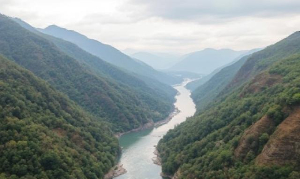Top 10 Facts About the Amur Heilong River
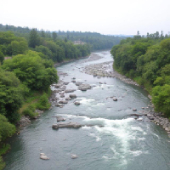
The Amur Heilong River is one of Asia's most powerful and fascinating rivers. Flowing for thousands of kilometers through northeastern China, the Russian Far East, and touching parts of Mongolia, it plays a huge role in both the natural world and human history. Known as Heilong Jiang (meaning “Black Dragon River”) in China and simply the Amur in Russia, this river stands out for its scale, wildlife, seasonal extremes, and the cultural stories tied to its waters. Here are 10 of the most interesting and unique facts about this incredible river.
One of the Longest Rivers in the World
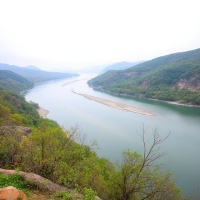
The Amur Heilong River stretches an impressive 4,444 kilometers — that's nearly 2,800 miles — from its source at the meeting point of the Shilka and Argun Rivers to its mouth at the Sea of Okhotsk. This makes it the 10th-longest river in the world. Along its path, the river passes through dense forests, open grasslands, wetlands, and low mountain valleys. In some places, the river grows to more than two kilometers wide. It's a massive natural feature that supports the lives of millions of people and thousands of animal and plant species. Its length and size help it shape weather patterns and connect faraway communities in China, Russia, and Mongolia.
A River with Two Names and Deep Cultural Roots
This river is shared by multiple cultures and countries, which is why it has more than one name. In China, it's called Heilong Jiang, meaning “Black Dragon River,” inspired by ancient legends that spoke of dragons controlling the river's flow. In Russia, the name Amur is believed to come from a local Indigenous word meaning “great river” or “great water.” These names are more than just labels—they reflect how deeply the river is connected to local traditions, history, and identity. Both names appear in songs, poems, and folk tales, reminding us that the river has always been more than just a physical feature on a map.
It Forms a Natural Border Between Nations
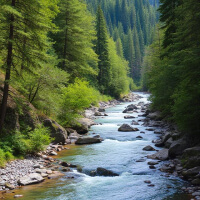
For over 1,000 kilometers, the Amur Heilong River forms the natural boundary between China and Russia. This border has a long and sometimes tense history. In the 19th century, disputes over the land led to political battles. Even in the 20th century, the river region saw moments of military tension. But things have changed. Today, China and Russia work together to manage the river, using it for trade, transportation, and conservation. The river now serves as a meeting point rather than a dividing line.
It's a Rich Home for Wildlife
The Amur basin is one of the most ecologically rich regions in Asia. Its forests, wetlands, and riverbanks provide shelter and food for a wide range of wildlife, many of which are endangered or extremely rare. The most famous animals living near the river are the Amur leopard and the Siberian tiger—two of the world's rarest big cats. Birds such as storks, cranes, and geese depend on the river's wetlands for nesting and migration. The river's waters host over 100 fish species, some of which are unique to this region.
The Amur Sturgeon Has Ancient Roots
One of the most wonderful creatures in the river is the Amur sturgeon. Often called a living fossil, this fish has survived with little change for over one hundred million years. It can grow over two meters long and live for decades. Sturgeons also have famous eggs: the eggs are used to prepare caviar, which is a very expensive delicacy. Unfortunately, excessive fishing has led to a rapid decline in their population. The Amur sturgeon is now, therefore, Critically Endangered. Russia and China have both acted to protect it, including the restriction of fishing, breeding programs, and habitat protection.
The River Powers Local Trade and Transport
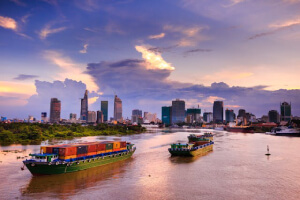
Even though much of the Amur region is remote, the river itself serves as a highway for people and goods. Barges and ferries move timber, coal, grain, and manufactured goods along its length. Many small towns and villages depend on the river for access to markets, supplies, and outside connections. In places where roads are limited or poorly maintained, the river becomes the main route for trade. Cities like Khabarovsk in Russia and Heihe in China have ports that allow cargo to be loaded and shipped during the warmer months.
It Freezes Over Each Winter
In a remarkable shift each year, the Amur Heilong River freezes solid during the winter. Between November and April, temperatures drop low enough to create thick ice, sometimes over a meter deep. Far from being a problem, this frozen state becomes a solution for transportation. People use the ice as a road, driving across the river in cars and trucks to deliver goods and reach nearby towns. When spring arrives, the ice melts and the river returns to its flowing state.
It's a Lifeline for Indigenous Communities
The Amur basin has been home to Indigenous peoples such as the Nanai, Ulchi, Evenki, and Oroqen for thousands of years. These communities rely on the river for food, transport, and cultural practices. They fish for species like salmon and sturgeon, hunt in the forests, and gather plants for medicine and daily use. Their knowledge of the river, passed down through generations, includes a detailed understanding of fish behavior, ice safety, and weather signs. As modernization spreads, Indigenous groups face pressure to change, but many are working to preserve their languages, customs, and connection to the land.
It's a Global Conservation Priority
The Amur Heilong River is now recognized as a vital region for global biodiversity. Conservation organizations from around the world — including WWF and local environmental groups — have focused on saving their wildlife, protecting wetlands, and educating local communities. Protected zones and nature reserves have been set up along the river's course. Anti-poaching teams, scientific monitoring, and international agreements all help to manage the area's natural resources.
The River Faces Serious Environmental Threats
Despite all of its importance, the Amur-Heilong River is under threat. Pollution by factories, farms, and cities has caused water quality problems. Several species have been pushed to extinction by overfishing and illegal trade. Altered thus makes less predictable is the flow of the river by sudden floods or droughts due to climate change. Various hydroelectric dams on the upstream threaten to change that natural flow and the downstream habitats. Logging and mining also caused extra disturbance to the land around the river. Without tighter restrictions in place, the natural distribution of the river could be lost.

